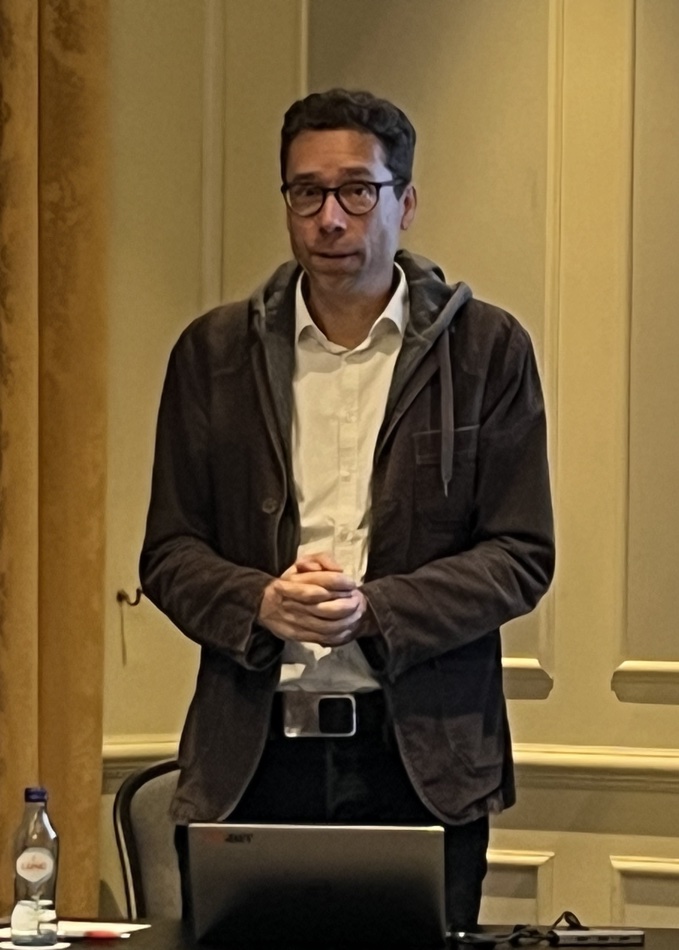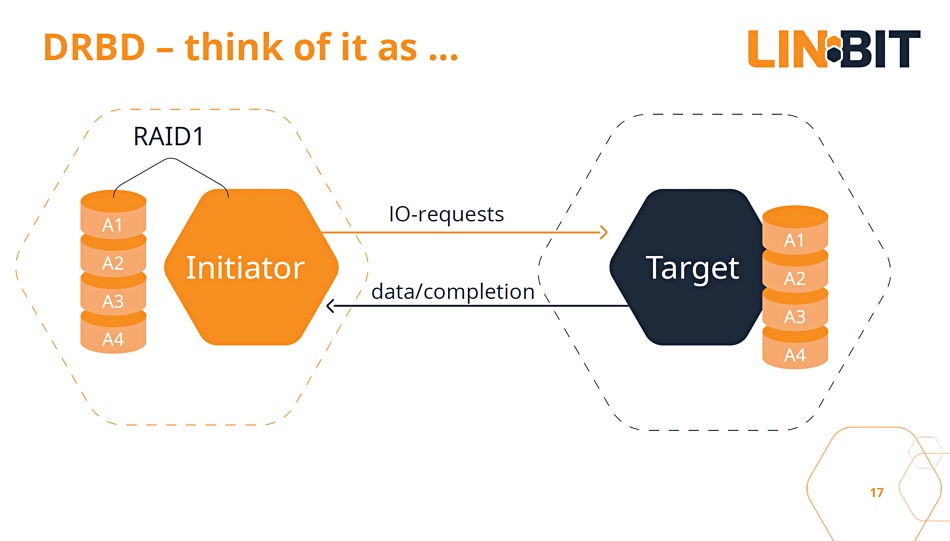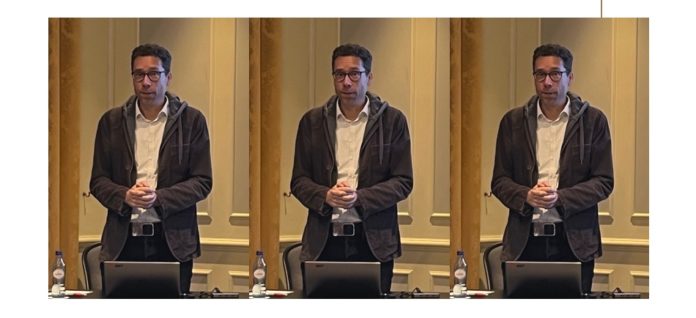Savvy Linux users can provide SAN services to physical, virtual and containerized applications without buying a SAN product, by using LinBit open-source software based on DRBD, which is included in the Linux distribution.
LINBIT provides support for DRBD in a similar way to how Red Hat supports its Linux distro and has four downloadable products on its website: a DRBD Linux kernel driver, DRDB Windows driver, LINSTOR cluster-wide volume manager and, in tech preview form, LINBIT VSAN for VMware. The core product is DRDB, a Distributed Replicated Block Device for Linux.

Unassuming LINBIT founder and CEO Philipp Reisner describes the Vienna-based company, with its €4.5 million annual revenues, as “a small money machine.”
He was talking to an IT Press Tour in Lisbon, describing his products and their place in the Linux world.
The company is privately owned and not VC-funded. Reisner started up the company in the early Linux open-source days. The company has 35 to 40 full time employees in Europe, mostly in Vienna, with 30 other employees in the US. It works with SIOS in the Japanese market.
Its software is based on Linux kernel technology which Reisner devised as part of his 2001 diploma thesis at Vienna’s Technical University. That has become DRBD and it has been included in the Linux kernel since version 2.6.33 (2009), been deployed on all major Linux distributions and is hardware and software agnostic.
The basic idea seems simple now, looking back 21 years later. Everything happens in the kernel data path, reducing the number of context switches and minimizing block IO latency.

A primary compute node with local storage issues a block write to that storage. A copy of the write is sent (replicated) to a connected secondary node, written there as well, and an ack sent back to the primary; data safely replicated, job done.
Linbit supports DRBD primary and secondary consistency groups with replication between them. There can be up to 32 replicas and each may be asynchronous or synchronous. All participating machines – there can be from 3 to 1,000s of participating nodes – have full replicas.

Linbit has developed DRBD to software-defined storage (SDS) including persistent volumes for containers, and says DRBD can be used for transaction processing with Oracle, PostgreSQL and MariaDB, virtualization with OpenStack, OpenNebula and others, and for analytics processing in data warehouses and other read-intensive workloads. Linbit SDS customers include Intel, Porsche, Cisco, Barkman, IBM, Sphinx, Kapsch, BDO Bank.
It recently added support for persistent memory and nonvolatile DIMM metadata and improved fine-grain locking for parallel workloads. More performance optimizations are on its roadmap as is a production release of WinDRDB – a port of the Linux DRBD code for highly available replicated disk drives to Windows. The V1 non-production release took place in the first 2021 quarter.
Other roadmap items are support for the public cloud with storage drivers for AWS EBS, Azure disks and Google Persistent Disks.
The world of Linbit is a universe away from the aggressive code-wrangling characteristic of Silicon Valley startups. It is a tribute to a single-minded concentration on a core Linux technology and a complete opposite to VC-funded, money-focused, growth aggression.








